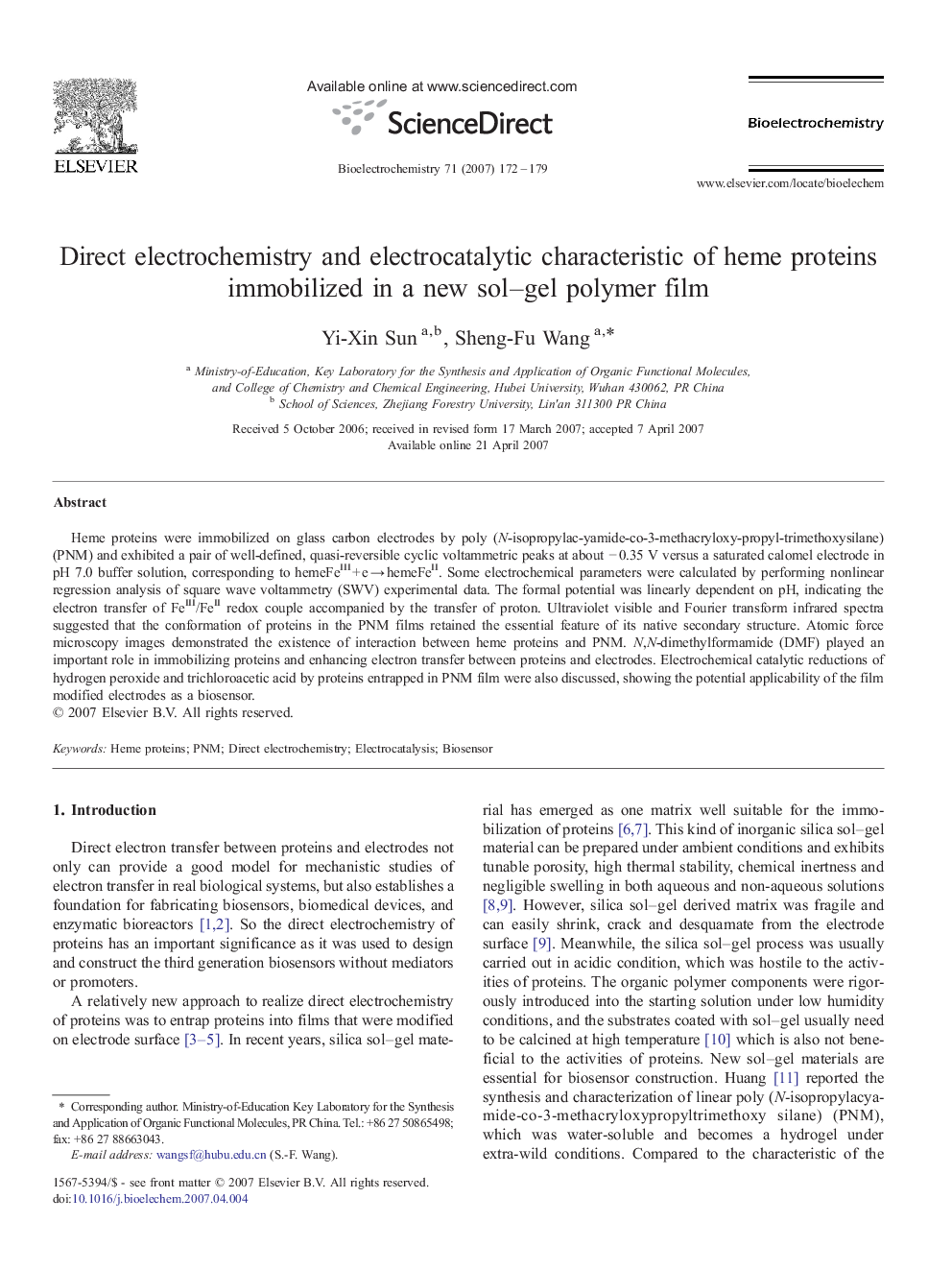| Article ID | Journal | Published Year | Pages | File Type |
|---|---|---|---|---|
| 1269190 | Bioelectrochemistry | 2007 | 8 Pages |
Heme proteins were immobilized on glass carbon electrodes by poly (N-isopropylac-yamide-co-3-methacryloxy-propyl-trimethoxysilane) (PNM) and exhibited a pair of well-defined, quasi-reversible cyclic voltammetric peaks at about − 0.35 V versus a saturated calomel electrode in pH 7.0 buffer solution, corresponding to hemeFeIII + e → hemeFeII. Some electrochemical parameters were calculated by performing nonlinear regression analysis of square wave voltammetry (SWV) experimental data. The formal potential was linearly dependent on pH, indicating the electron transfer of FeIII/FeII redox couple accompanied by the transfer of proton. Ultraviolet visible and Fourier transform infrared spectra suggested that the conformation of proteins in the PNM films retained the essential feature of its native secondary structure. Atomic force microscopy images demonstrated the existence of interaction between heme proteins and PNM. N,N-dimethylformamide (DMF) played an important role in immobilizing proteins and enhancing electron transfer between proteins and electrodes. Electrochemical catalytic reductions of hydrogen peroxide and trichloroacetic acid by proteins entrapped in PNM film were also discussed, showing the potential applicability of the film modified electrodes as a biosensor.
